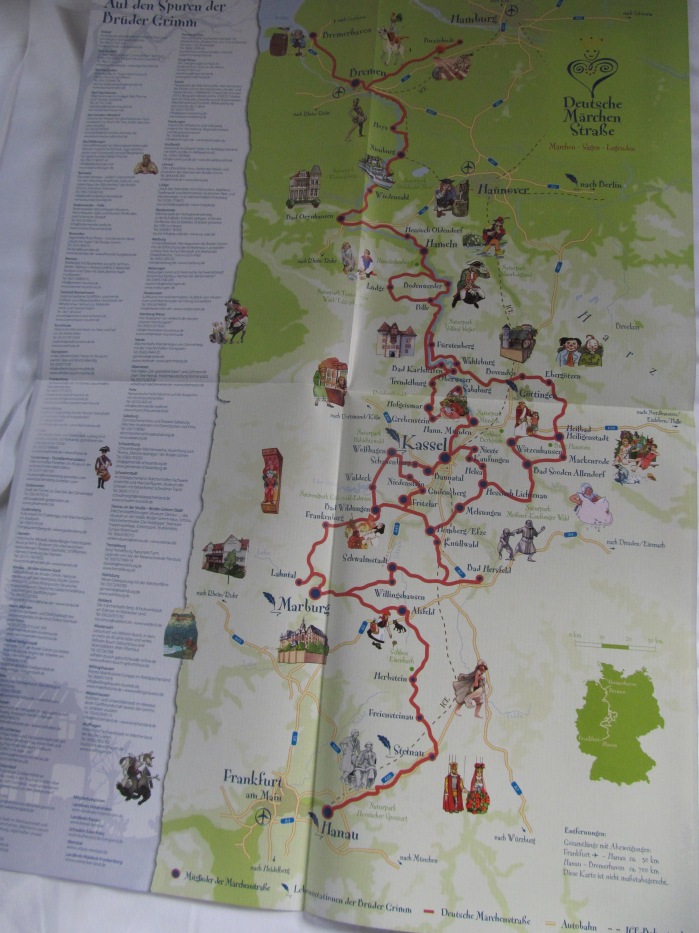
Once upon a time there lived two brothers who traveled far and wide in search of fairy tales to record so that people could enjoy them for all time. They were the Brothers Grimm, and their collection of fairy tales has created a common knowledge among story lovers young and old.
But think back to when they began collecting the stories, traveling over hills and mountains, across rivers, through woods, and past farmland as far as the eye can see. The route they took seems to remain largely unchanged. Tiny villages of Fachwerk (half-timbered) houses can be found scattered between endless acres of farms and fields. Apple trees, grazing plow horses and cattle, dark pine woods… each sight seems vaguely reminiscent of a tale.
Last weekend we began touring the German Fairy Tale Route, a list of towns (many so rural they belong to a larger district of other small, loosely-connected areas) where Wilhelm and Jakob Grimm lived, worked, and found their stories. What follows about the towns and tales is told in a mix of past and present, fiction and fact, threaded through with an appreciation for fairy tales and a curiosity about their origins.
Let’s begin in Hameln and work our way back south…
The Pied Piper of Hamlin
“And it was here that he led the rats, the Piper? They drowned in the River Weser?” Wilhelm looked through the thick window panes at the bank nearby.
The miller crossed his arms and nodded slowly without following his interviewer’s gaze. “Aye. And so the story goes that the good people of Hameln then neglected their promise.”
“To pay the piper?” A cold wind rushed around the house and rattled the windows.
“To pay the piper. And so he came again with his pipe and spirited the children away into yon mountains. All except for one…”
…
Today the piper lures the rats and then the children from Hamlin town several times a day in the form of a Glockenspiel outside the Museum Hameln near the Weser River. The extensive museum itself lures visitors with an entire floor dedicated to art, history, and literature revolving around the ill-treated piper. A bizarrely modern theater piece even tells the story with faceless animatronics. An exhibit dedicated to all of the Brothers Grimm fairy tales, highlighted by photographs of characters made from vegetables and plants, is temporarily running.
On to stay the night in Trendelburg…
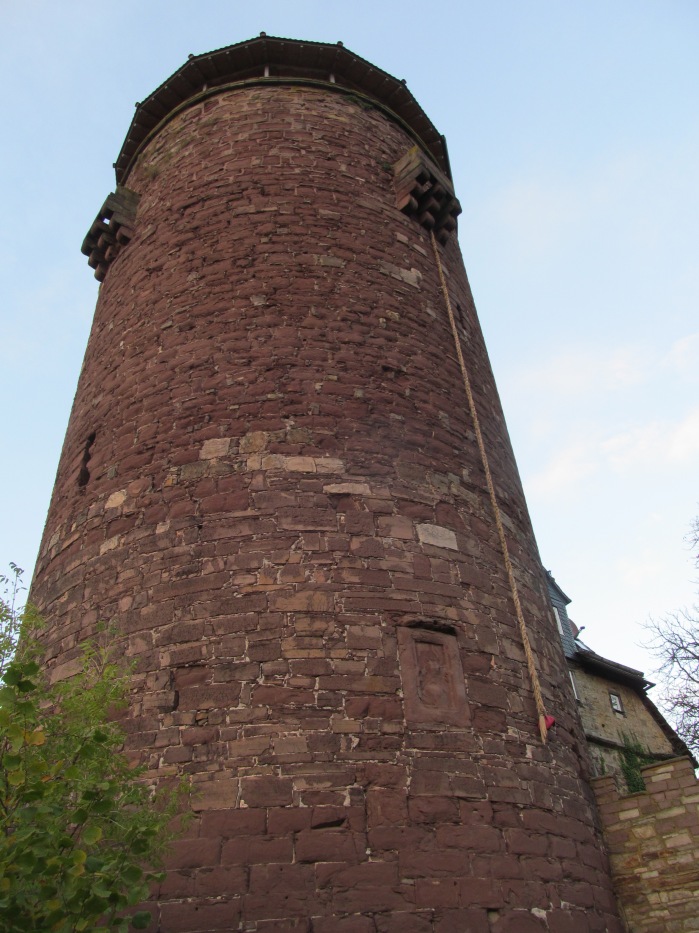
Rapunzel
“The townsfolk here must be able to see the tall tower from far and wide, and it certainly would be impossible to scale without help. Do you know if there’s any truth in it, the tale?” Jakob leaned closer to the fire and held his hands in front of it, curling and stretching his fingers. A crow cawed somewhere in the trees outside, out of sight.
The baker’s wife tilted her head and looked up as though searching through her memory. “Hm, can’t say I rightly know. Well… there was once a nobleman who was held prisoner in the dungeon. Locked up in… it had what they called a fear hole. The tower, I mean. They lowered people into it, only most people only had to take one look down there before they confessed to whatever crime they were accused of.” She drew the shawl around her shoulders together more tightly. “Anyway, this one nobleman was held prisoner there for twelve years. And they say when he came out, he was blind.”
“Like the prince who was blinded when the witch threw him over the tower.”
“Yes, I suppose you could say there’s some similarity. Except in the story, Rapunzel’s tears work magic on the prince’s sight…”
…
Modern-day visitors can climb the stairs to reach the top of Trendelburg’s tallest tower for a beautiful view of the surrounding countryside and a brief look into the history of medieval torture and imprisonment. Other parts of the castle have been converted into cozy hotel rooms (we stayed in the top room of the Fairy Tale tower), a luxurious spa, and an elegant restaurant.
Meanwhile in Sababurg…
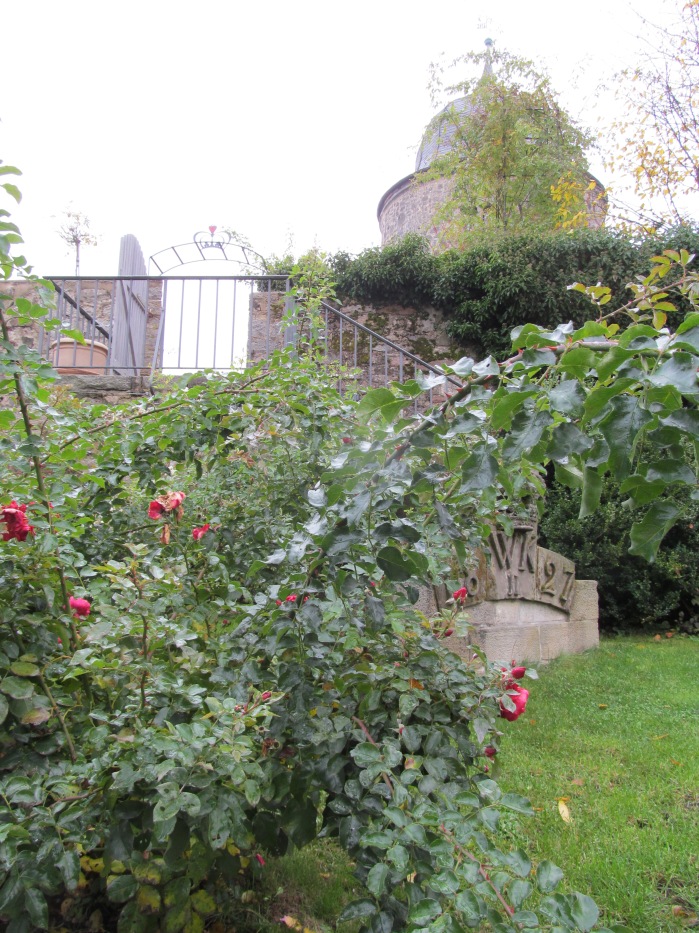
Sleeping Beauty
“That’s where her name comes from.” The farmer pointed to the rose bushes blooming all around the castle at the top of the hill. “Dornrӧschen. Little Thorn-Rose.”
“Yes, I saw. They’re beautiful,” Jakob replied without looking up, still hurriedly making notes.
“Look closer,” the farmer said, leaning in and continuing to point. He replaced his pipe to the corner of his mouth and chewed on it thoughtfully, slowly drawing in a breath. “Look how thick the thorns are. And imagine them growing wild for a hundred years…”
…
For a few euros, the remaining grounds and courtyard of Sababurg can be visited today. Only a few roses are currently in bloom at the moment, as chilly fall weather has finally set in, but the main attraction is a collection of somewhat abstract steel etchings telling the story of the bewitched princess. Sababurg is also a hotel and restaurant, and houses a theater in its cellar.
Break for coffee and cake at Bad Wildungen’s gingerbread house…
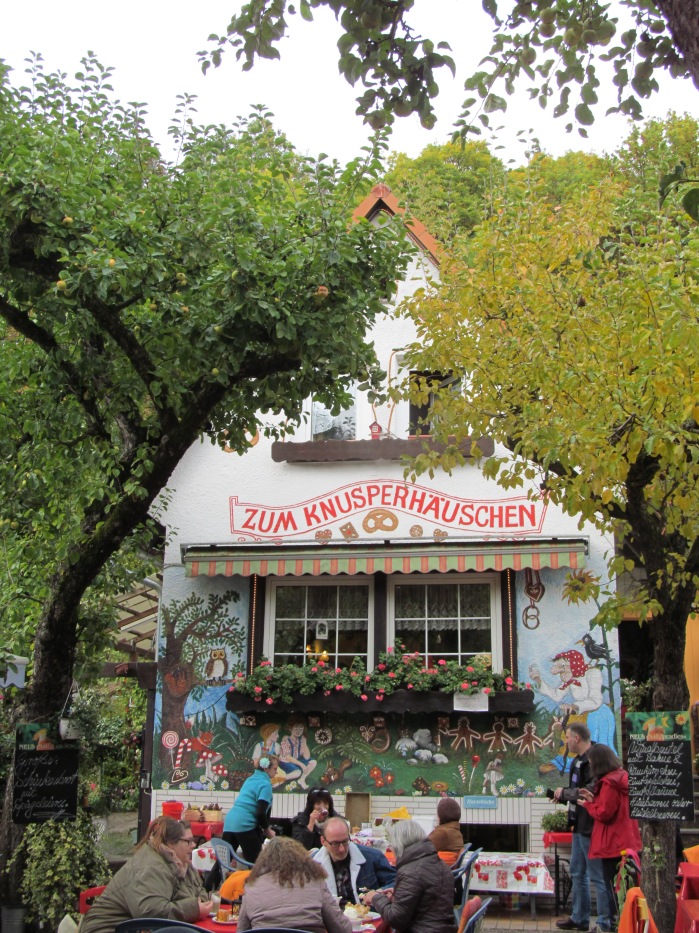
Hansel and Gretel
“I’m so hungry. This looks like a nice place to stop for a bite…”
…
The only treat more tempting than a candy house might just be the ENORMOUS homemade cream puff swans that Knusperhӓuschen Café is famous for. Both elegant and excellently made (with many choices of fruit to add to the cream filling), this is an incredible substitute for a meal or two. Witch and gingerbread décor runs rampant inside and out, and souvenirs are also available for purchase. The staff seems sweet and friendly, but you may want to leave a trail of breadcrumbs to get back to the car just in case…
And in nearby Berg Freiheit, Bad Wildungen…
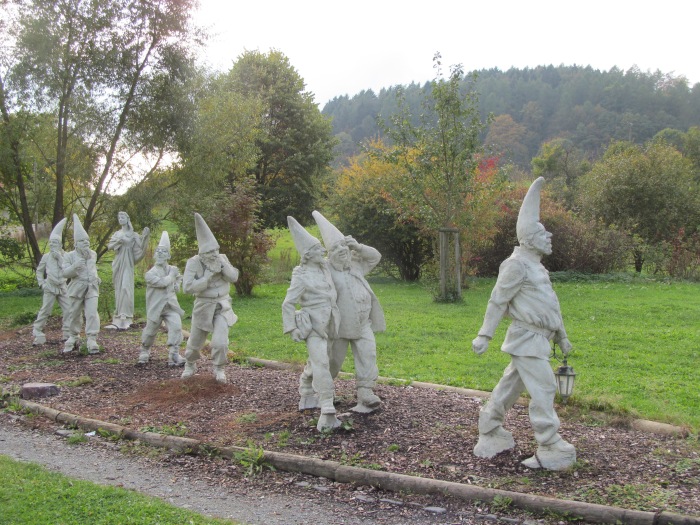
Snow White and the Seven Dwarves
“…and they lived happily ever after.”
Jakob finished scratching out the ending, set down his quill and crossed his hands in front of him. He looked down at the last page and then back up at the coppersmith for a long moment, the story hanging in the air between the two.
“Tell me more about the dwarves. We’ve interviewed many people here in Bad Wildungen and they all describe them the same way: seven little men with pointed hoods who work under the mountains. Tell me more about them.”
“It’s the miners, sir. The ones that work here in the mountain, Berg Freiheit. They take them as children, when they’re only maybe fourteen. It’s on account of how tight the tunnels are that they stay so small. Lay on their backs and inch through there, they have to. They never get any normal exercise during the day. Don’t hardly even stand, so their muscles get all slack and they can’t even stand straight right. And they get up so early, they don’t see the light of day. It’s the mines that keeps them so small, small as dwarves.”
He lifted his chin in the direction of the Fachwerk houses across the street. “They board together in many of the houses here – three, four, five, maybe more to a room.”
“Even seven?” Jakob asked absently, still struggling to imagine life in the mines themselves.
“Can be. They leave their families young to live and work together.”
…
Fortunately such a boarding house and even the mines can be visited leisurely and of visitors’ own free will in this day and age. The Schneewittchen Haus is more house than museum, adorably decorated in keeping with the fairy tale and available for children’s birthday parties and other events. A short video in German explains the origins of the story and the history of the town. Across the street, another house holds a mining museum. Both museums and the mines have limited hours, so we were only able to make it to the Snow White house on this trip.
Finally on to Schwalmstadt…
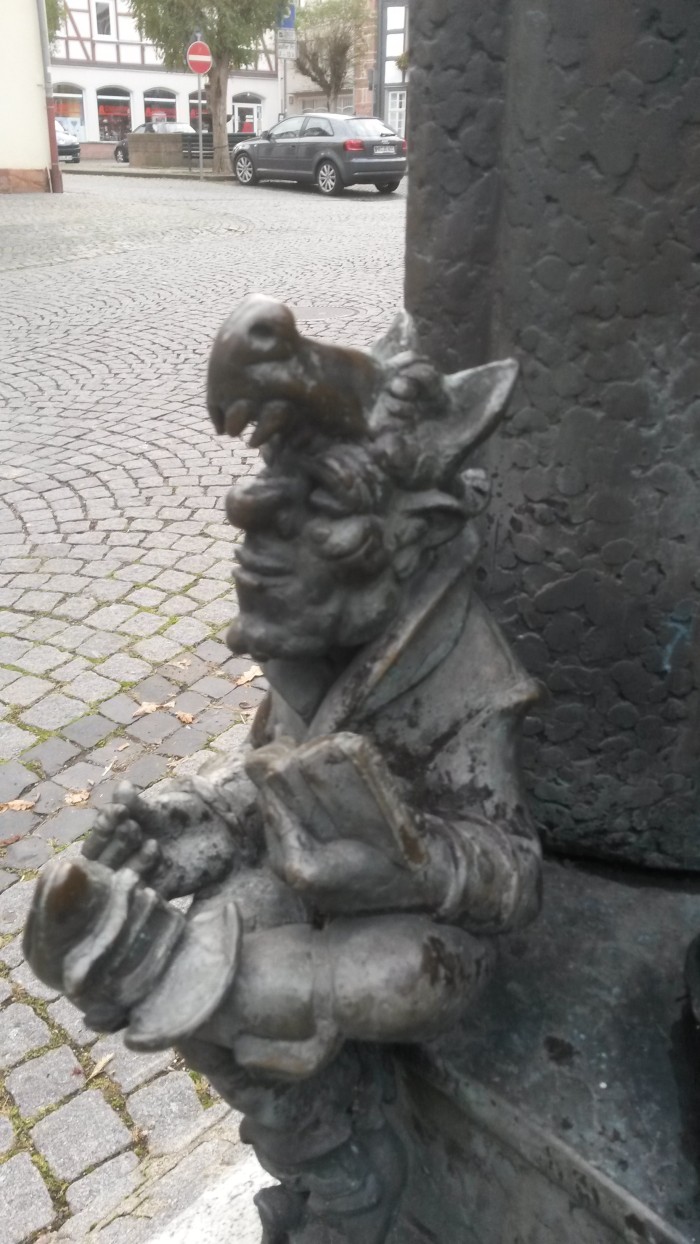
Little Red Riding Hood
“I think we’re almost through these woods.”
“Are you sure? You said that an hour ago.”
“Trust me, Wilhelm. This time I see the witch’s tower ahead.”
“I wonder what tales the townsfolk of Schwalmstadt have in store for us here…”
…
We made it here too late in the day to visit the local culture and history museum, but the drive through the deep, dark woods and the charming architecture – though in various states of repair – were worth coming for.
We hope to make it to a few more of the towns along the Fairy Tale Route this fall, including Witzenhausen, home of the Frog Prince and its story-themed cake. It pays to keep an eye out along the route, as we came across quite a few surprises driving amid the sprawling farmlands. I wonder what the Brothers Grimm would make of all this…
If you like fairy tales, check out my story about our trip to Norway: Norway in a Fish Tale.

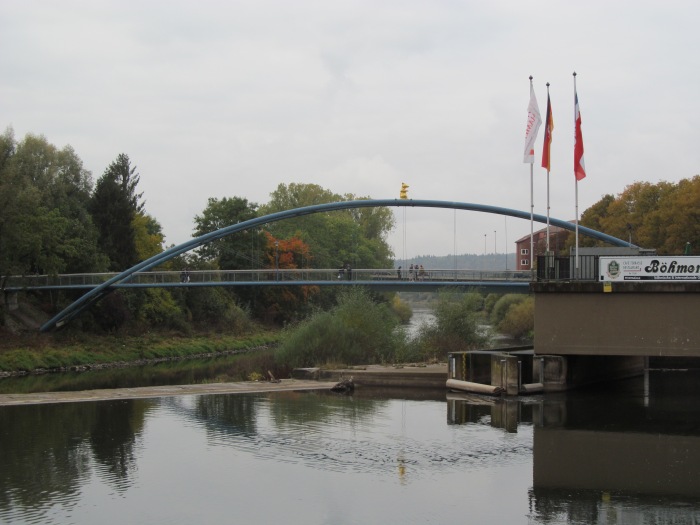







































2 thoughts on “Following the Footsteps of the Brothers Grimm”